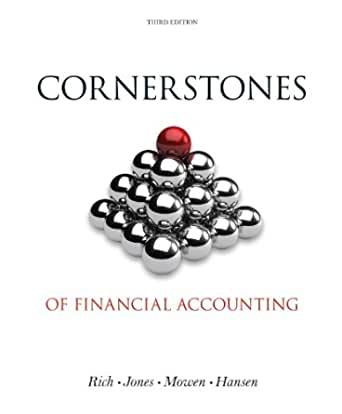Question
Potts Limited manufactures four products. The following estimates have been made for the next production period based on previous year sales: Product A B C
Potts Limited manufactures four products.
The following estimates have been made for the next production period based on previous year sales:
| Product | A | B | C | D |
| Volume (units) | 10,000 | 2,000 | 15,500 | 600 |
| Material cost per unit () | 14 | 5 | 12 | 22 |
| Labour cost per unit () | 4 | 6 | 8 | 12 |
| Labour hours per unit | 0.25 | 0.25 | 1.5 | 1 |
| Machine hours per unit | 0.5 | 0.5 | 1.5 | 2 |
The owner ofPotts Ltd has come to you, the management accountant, for some advice regarding the sales of its products. 'I'm glad to see that we are selling lots of Product C, but we need to increase the amount of sales in our other products, especially Product D. We never sell that many of Product D, because our rivals seem able to sell at a lower price.
I know you keep saying that the methods we use to cost our products are very advanced, using the latest methods to accurately estimate how much overheads should be charged to the cost of each product. Using these accurate product costs to set accurate selling prices should help us make a profit but it's not helping us sell enough of Product D.
Estimated overhead costs for the next period:
- Factory overhead applicable to machine related activity is 151,250
- Set-up costs are 62,100
- Cost of ordering materials is 64,000
- Cost of moving materials is 20,256
- The stores department is expected to cost 33,150
Research into the activities responsible for the production overheads, in order to identify 'cost drivers', has revealed that the level of setup costs are most likely caused by the number of machine set ups. Material ordering costs are most likely caused by the number of material orders. The cost of moving materials is most likely caused by the number of times materials are moved. The stores department overheads are most likely dependent on the number of spare parts required for production.
The following product information has also been given
| Product | Number of machine set ups | Number of material orders | Number of times materials moved | Number of spare parts |
| A | 3 | 200 | 120 | 120 |
| B | 4 | 500 | 60 | 260 |
| C | 2 | 1,000 | 40 | 100 |
| D | 9 | 300 | 20 | 300 |
| Total | 18 | 2,000 | 240 | 780 |
REQUIRED
(a)Calculate the total cost per unit for each product using Activity Based Costing, by means of appropriate cost drivers, to allocate overhead costs.
Step by Step Solution
There are 3 Steps involved in it
Step: 1

Get Instant Access to Expert-Tailored Solutions
See step-by-step solutions with expert insights and AI powered tools for academic success
Step: 2

Step: 3

Ace Your Homework with AI
Get the answers you need in no time with our AI-driven, step-by-step assistance
Get Started


